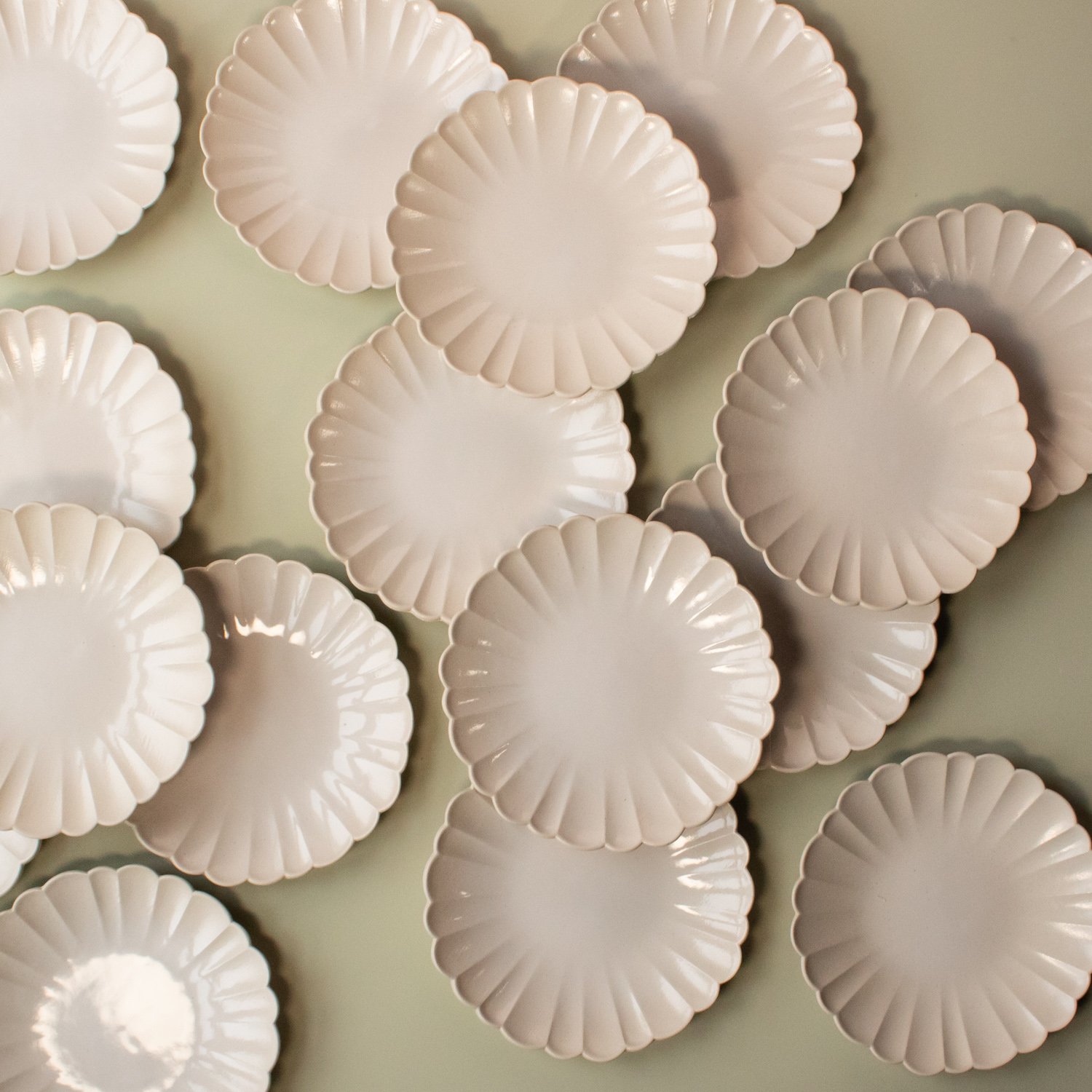The wild daisy.
It might look simple (or does it?) but the story of this plate involves a very complicated 3d-print, a 20 ton hydraulic press, a 55 kg human press, a dozen broken plaster moulds (and the broken heart of those who made them) and lots of headaches.
Neighbourhood super-restaurant Bellies got us onto the thought of making our own version of a tableware classic. We obviously - being us - wanted ours to be less perfect and precise than the daisy-ish plates we have seen in the past. We made the leaves different in length and width, giving the plate a random and wild look - and in our opinion a more interesting one.
We wanted to produce this plate by pressing, since this gives us much more variety when it comes to the choice of clay. Pressing is done in the industry with a proper machine and quite complicated tooling, which is why we figured we would do it in a different way, and one that no one else had ever tried before! We love doing that, especially when it works… This time it didn’t, and we had to change our plans from optimistic (naive) innovation to the very well-known technique of casting clay. The plates turned out beautifully, and we are still experimenting with new types of casting clay and different glazes to get the variation we want!
Photo: Bellies.
Photo: Bellies.
Our first attempt at pressing the plates were done with a 55 kg human press!
Trying out or brand new hydraulic press. For a while we were quite optimistic, until we realized that the mould broke once we added enough pressure to get a different result than our human press had been able to achieve…
The second attempt at the hydraulic press, and the first of many broken plaster moulds.
A pressed plate resting on the mould. The problem was that we could not get the accuracy we wanted without adding more pressure - which again broke the moulds.
Our first pressed plate! We are quite proud!
After breaking a dozen plaster moulds, we made a dozen new ones! These plates are from one of the first casts and not yet succesful as the slip (casting clay) was not properly adjusted and the pressure during casting not sufficient.
A matte green glaze.
Testing various glazes.
A bunch of the original plates for Bellies, cast in an off-white stoneware clay and glazed with a whiteish glaze, mostly in the middle part.












